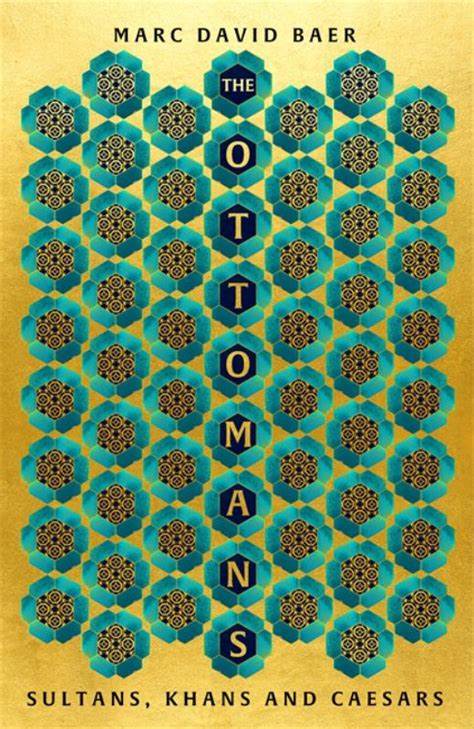My own understanding of the Ottoman Empire is related to its connections to Palestine, a hatred of Empires and my interest in history.
I also felt it necessary to understand Islamophobia. This only arose in more recent times. According to Deepa Kumar, this was because, during the time when the Ottomans were at their peak, they were considered by countries like England as equal, or maybe superior people, because they were much more powerful than England or France. According to his book ‘Islamophobia and the Politics of Empire’ it needed two conditions: ‘colonial domination and “free” liberal societies’. In other words, the Ottomans needed to be defeated and in order for them not to be given equal rights, they had to be seen as lesser peoples.
So when this new book appeared I thought it was time to learn the stages of Ottoman history from powerful empire to defeat by the new Empires.

The writer says he wanted to do a history that realigned the prevailing understanding and dealt with it as the history of a European empire. A great amount of it happened in Europe and was related to events in Europe.
It is a fascinating read.
It deals with its formation in Anatolia right the way through to the First World War, a five-hundred-year history of many changes and shifts.
The regime was brutal. Whoever of the descendants replaced the old ruler, killed his brothers and uncles, to make sure there was no competition. At certain points the majority of its citizens were Christians, and it enforced a rule called the Collection. It determined they gave up their youngest child to the state and these were educated as Muslims and soldiers, thus creating an entirely loyal army, the Janissaries.
Otherwise, they were very ‘enlightened’ in the early stages, well before Western Europe, Christians and Jews had posts or jobs at very high levels. When they took over Constantinople they invited all the Jews who had been driven out of Spain, Britain and other countries to come and the Jewish population had a Golden Age.
The Sultan had Jewish doctors, there was a Jewish Grand Vizier, and although some of them converted it did not seem to affect them if they did not.
At the same time as the Reformation in Europe, the conflict between Christians, there was the clash between the Sunni Ottomans and the Shias in Iran.
Ottoman troops fought alongside Martin Luther, at one point, because he considered the Pope his major enemy. The Ottoman navy was deployed in the Mediterranean.
The Ottomans carried out many massacres, but so did the European factions, in which ‘tens of thousands were killed’.
Constantinople was, under one ruler, Mehmed II, a Renaissance City. He was painted by Bernini and had Italian architects and painters working in the city designing buildings and producing artworks.
In the ‘Age of Discovery’, after the takeover of Constantinople, the Caliph defeated the Mamluks and became a majority Muslim Empire. Naval technology and weapons were developed helping them spread out to the Indian Ocean, as well as the Mediterranean. Many of the places the Portuguese and then British ‘discovered’ the Ottomans had already been trading there.
This period was followed by a Sunni return to stricter rules. It was their period of clashes with the Safavid Shias. But for a period this included clamping down on other religions,.
One realises that in a 500 Year history there are many changes, sometimes progressive, sometimes reversals, but always in order to keep the Imperial regime in control.
Towards the end of the 19th Century, there were ‘modernising’ developments, the Young Turks. But these were ultra-nationalistic.
Even before the First World, which the Ottomans joined with Germany, there were attacks on Armenians, who had been totally loyal to the Empire and often held high positions.
When the War started, defeats by Russia were blamed on Russian Armenians and the Armenians in the Army and official positions were attacked. This resulted in the genocide against Armenians and if you have any doubts about this, read this section of the book. The Ottomans then used the land where they were driven out to give homes to Muslims driven out of other countries by the defeats in the war. An interesting piece in the description of this is the encouragement by the German officers in the Ottoman Army. It was not just a Turkish genocide. They also killed an estimated half of the 500,000 Assyrian population.
The Ottoman Empire was ultimately defeated by the industrial strength of the West, alongside its banking power. Like the Egyptians, they got into huge debt trying to keep up.
I have given just a glimpse of this big book, described as outstanding by Eugene Rogan, of the Middle East Centre in Oxford, because although it is not Marxist history, it is a useful academic book on an important historical force, in both European and World History. Well worth a read, if you have time.
The Ottomans: Khans, Caesars and Caliphs’ by Marc David Baer, Basic Books (Oct.2021)
Art Book Review Books Campism Capitalism China Climate Emergency Conservative Government Conservative Party COVID-19 Creeping Fascism Economics EcoSocialism Elections Europe Far-Right Fascism Film Film Review Fourth International France Gaza History Imperialism Israel Italy Keir Starmer Labour Party Long Read Marxism Marxist Theory Migrants Palestine pandemic Police Protest Russia Solidarity Statement Trade Unionism Trans*Mission Transphobia Ukraine United States of America War

